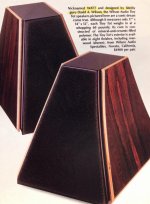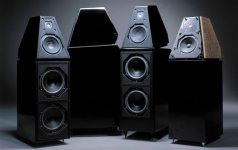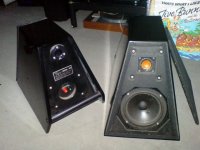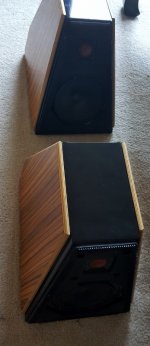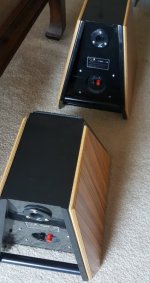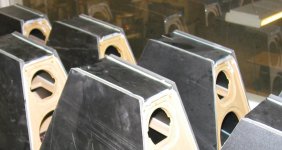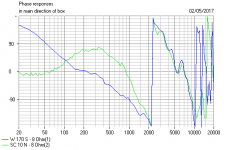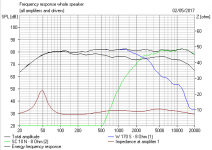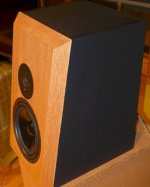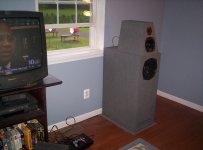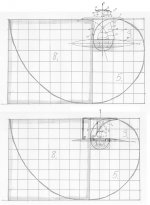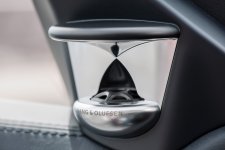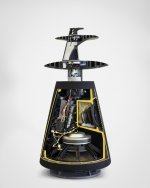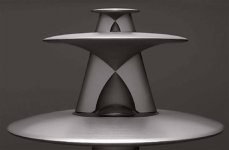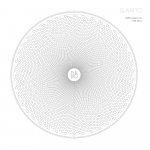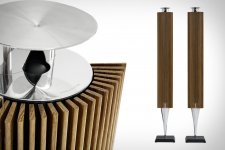There is a certain liaison between the french loudspeakers that were discussed and the next one.
Steve's post http://www.diyaudio.com/forums/multi-way/147632-classic-monitor-designs-30.html#post5072162 and the interview with Joachim Gerhard he mentioned fits into this context.
Some words are necessary to explain the System devised by Dave Wilson, which since has become something of a standard in High-End Audio. The System took a while to develop and was originally never intended as a commercial product.
Dave Wilson first developed the Watt as Monitor for his own Recording Company. He needed a speaker that was portable (unlike the absolute Leviathan - the Wilson Audio Modular Monitor - WAMM). Thus the Tiny Tot was born. A small heavy truncated pyramid shape with a 6.5" SEAS Bass/Mid range and the then revolutionary inverted Dome-Tweeter from Focal. In order to keep the Speaker portable, Dave Wilson consciously sacrificed Bass-extension and instead optimised the speaker for sound staging and natural Voices.
As things happen from time to time, people heard the Watt and wanted it. So Dave Wilson started making them in small series. But the problem with the missing Bass remained. After a Subwoofer previously sold with the Watt became unavailable, Dave Wilson decided that it was time to give the Watt a Woofer. So he build that cute little Wilson Audio Puppy (WAP), a surprisingly small Woofer unit, using two 8" Dynaudio 21W-54 Woofers and being just the right height to park a pair of Watt's on top.
This sold for a while as "System II", had various upgrades until it appeared in it's current form. With all this, a classic was born (albeit a very expensive one). One thing that makes the Watt/Puppy combination so appealing is the fact, that it's a relatively efficient speaker with a decent Bandwidth packaged in what is still a domestically acceptable format.
Name a true Full range High-End Speaker that pulls this one even today, with the Watt/Puppy production that lasted for nearly 25 years...
(Edited excerpt from vinylzone)
Steve's post http://www.diyaudio.com/forums/multi-way/147632-classic-monitor-designs-30.html#post5072162 and the interview with Joachim Gerhard he mentioned fits into this context.
Some words are necessary to explain the System devised by Dave Wilson, which since has become something of a standard in High-End Audio. The System took a while to develop and was originally never intended as a commercial product.
Dave Wilson first developed the Watt as Monitor for his own Recording Company. He needed a speaker that was portable (unlike the absolute Leviathan - the Wilson Audio Modular Monitor - WAMM). Thus the Tiny Tot was born. A small heavy truncated pyramid shape with a 6.5" SEAS Bass/Mid range and the then revolutionary inverted Dome-Tweeter from Focal. In order to keep the Speaker portable, Dave Wilson consciously sacrificed Bass-extension and instead optimised the speaker for sound staging and natural Voices.
As things happen from time to time, people heard the Watt and wanted it. So Dave Wilson started making them in small series. But the problem with the missing Bass remained. After a Subwoofer previously sold with the Watt became unavailable, Dave Wilson decided that it was time to give the Watt a Woofer. So he build that cute little Wilson Audio Puppy (WAP), a surprisingly small Woofer unit, using two 8" Dynaudio 21W-54 Woofers and being just the right height to park a pair of Watt's on top.
This sold for a while as "System II", had various upgrades until it appeared in it's current form. With all this, a classic was born (albeit a very expensive one). One thing that makes the Watt/Puppy combination so appealing is the fact, that it's a relatively efficient speaker with a decent Bandwidth packaged in what is still a domestically acceptable format.
Name a true Full range High-End Speaker that pulls this one even today, with the Watt/Puppy production that lasted for nearly 25 years...
(Edited excerpt from vinylzone)
Attachments
Last edited:
There is no denial that the Wilson Audio Watt/Puppy has inspired many diy-ers to build clones of this modular loudspeaker system. The same goes for Wilson Audio loudspeakers in general.
A search on this forum will yield more than a few hits and you will find Wilson inspired designs on the websites of Troels Gravesen, Tony Gee and others.
It's obvious the Reference 3a and Wilson Watt - in their respective iterations - have many design features in common. The pyramid shape, the acoustic foam/felt on the baffle, the carefully selected (OEM vs custom) drivers and subsequently simple Crossover designs. A result of this clever engineering is the rather high sensitivity of both loudspeakers: 91-93dB.
A search on this forum will yield more than a few hits and you will find Wilson inspired designs on the websites of Troels Gravesen, Tony Gee and others.
It's obvious the Reference 3a and Wilson Watt - in their respective iterations - have many design features in common. The pyramid shape, the acoustic foam/felt on the baffle, the carefully selected (OEM vs custom) drivers and subsequently simple Crossover designs. A result of this clever engineering is the rather high sensitivity of both loudspeakers: 91-93dB.
So W(h)ATT makes these so special, besides the extraordinary price-tag?
From a technical viewpoint that would be first and foremost the cabinet, which account for a substantial part of (production) costs.
The first series of the Tiny Tot were constructed from mineral filled acrylic. Over the years Wilson has developed several proprietary composites ideally suited to loudspeaker enclosures, at least that's what the company want us to believe.
One might ask what the proportional added value is of all these endeavours and astronomical production costs to something as trivial as sound quality.
I'll leave further comments to the experts and experienced.
This is what Martin Colloms wrote about the WATT enclosure:
"A State of the Art Enclosure Design for Minimum Audible Resonance
Where price is no object, costly materials and techniques can be employed to generate the
finest results. In one system example, the WATT by Dave Wilson,* the enclosure benefits
from many techniques to achieve a remarkably inert result. The following details are all
considered influential, including the small size (approximately 9 litres) which naturally
improves strength and also results in a small enclosure surface area with reduced acoustic
radiation. The enclosure itself is a truncated pyramid; as a result the panels are nonrectangular
and the internal surfaces are substantially anti-parallel. The latter minimises
internal standing-waves while the former helps to disperse and moderate the usual plate
resonances present in conventional enclosure panels. In addition the interior is lined with
anechoic grade foam supplemented by a volume filling of polyester fibre.
The enclosure panels are cut from a dense, naturally inert composite—an acrylic,
heavily loaded with ceramic and a mineral powder—which may be machined like marble.
High- frequency panel modes are controlled by a highly resistive bituminous laminate
on the inner surface while the remaining fundamental resonances are handled by heavy,
20 mm thick lead slabs bolted into position on elastic mountings to provide tuned, seismic
damping. Furthermore, the side panels are extended at the rear to form small triangular
‘wings’. A massive alloy bar is bolted up between these wings, horizontally disposed and
providing a stressed reinforcement for these largest radiating surfaces. Finally, the finished
mass of approximately 25 kg provides a heavy inert foundation for the two-way driver
lineup to perform at its best. The high performance attained in this enclosure design is an
object lesson in the continuing importance of enclosure colouration in box speaker design.
Both mechanical impulse tests and listening have shown that this quality of enclosure
has a dramatic effect in improving sound quality, particularly with transients, subjective
dynamics, stereo focus and depth; as such it shows that despite considerable improvements,
we still have a long way to go in the field of commercial enclosure design.
However, this performance is achieved at high cost, approximately 15 times that of a
normal enclosure of this size."
This comment from Arthur Salvatore is quite enlightening:
"I was a Wilson Audio dealer in the late 1980’s and personally owned a pair of Watt IIs, that I later extensively modified. I am also familiar with many of their subsequent models. The basic WATT design is David Wilson's greatest audio achievement, because it demonstrated, for the first time, the potential of dynamic loudspeaker designs. When it first came out, it may have been one of the finest speakers available, at any price. Further...
I believe the Wilson WATT to be one of the most important and influential audio components of all time. Despite its obvious faults, the design noticeably proved the critical importance of reducing cabinet resonances to the bare minimum, no matter what the effort and cost. This unique achievement has since permanently changed the course of loudspeaker design, to the amazing degree that almost every serious dynamic speaker made today has been influenced by the WATT. It's difficult to imagine a greater audio legacy than that. In short, almost every audiophile, who uses and enjoys dynamic speakers, owes David Wilson some gratitude, even if they are not fans of Wilson's own models. In fact, somewhat sadly...
It must also be said that the WATT (and every other Wilson Audio speaker) has almost always been overpriced, to even absurd levels in recent years. It is also true that all of Wilson's speakers (except the earlier WATTS) have been grossly overrated by a groveling (see TAS #125) and incompetent audio press. However, the WATTS can still be an excellent choice if purchased used and then modified.
Only their cabinets will be utilized, so it’s best to find the cheapest model available. Updated drivers, crossovers etc. can then be installed for a reasonable (not by Wilson!) cost. The end result will be a superb speaker, definitely competitive to Wilson's latest models, purchased at a fraction of their cost, and which even low-powered (SET/OTL) amplifiers can drive (a major advantage)."
From a technical viewpoint that would be first and foremost the cabinet, which account for a substantial part of (production) costs.
The first series of the Tiny Tot were constructed from mineral filled acrylic. Over the years Wilson has developed several proprietary composites ideally suited to loudspeaker enclosures, at least that's what the company want us to believe.
One might ask what the proportional added value is of all these endeavours and astronomical production costs to something as trivial as sound quality.
I'll leave further comments to the experts and experienced.
This is what Martin Colloms wrote about the WATT enclosure:
"A State of the Art Enclosure Design for Minimum Audible Resonance
Where price is no object, costly materials and techniques can be employed to generate the
finest results. In one system example, the WATT by Dave Wilson,* the enclosure benefits
from many techniques to achieve a remarkably inert result. The following details are all
considered influential, including the small size (approximately 9 litres) which naturally
improves strength and also results in a small enclosure surface area with reduced acoustic
radiation. The enclosure itself is a truncated pyramid; as a result the panels are nonrectangular
and the internal surfaces are substantially anti-parallel. The latter minimises
internal standing-waves while the former helps to disperse and moderate the usual plate
resonances present in conventional enclosure panels. In addition the interior is lined with
anechoic grade foam supplemented by a volume filling of polyester fibre.
The enclosure panels are cut from a dense, naturally inert composite—an acrylic,
heavily loaded with ceramic and a mineral powder—which may be machined like marble.
High- frequency panel modes are controlled by a highly resistive bituminous laminate
on the inner surface while the remaining fundamental resonances are handled by heavy,
20 mm thick lead slabs bolted into position on elastic mountings to provide tuned, seismic
damping. Furthermore, the side panels are extended at the rear to form small triangular
‘wings’. A massive alloy bar is bolted up between these wings, horizontally disposed and
providing a stressed reinforcement for these largest radiating surfaces. Finally, the finished
mass of approximately 25 kg provides a heavy inert foundation for the two-way driver
lineup to perform at its best. The high performance attained in this enclosure design is an
object lesson in the continuing importance of enclosure colouration in box speaker design.
Both mechanical impulse tests and listening have shown that this quality of enclosure
has a dramatic effect in improving sound quality, particularly with transients, subjective
dynamics, stereo focus and depth; as such it shows that despite considerable improvements,
we still have a long way to go in the field of commercial enclosure design.
However, this performance is achieved at high cost, approximately 15 times that of a
normal enclosure of this size."
This comment from Arthur Salvatore is quite enlightening:
"I was a Wilson Audio dealer in the late 1980’s and personally owned a pair of Watt IIs, that I later extensively modified. I am also familiar with many of their subsequent models. The basic WATT design is David Wilson's greatest audio achievement, because it demonstrated, for the first time, the potential of dynamic loudspeaker designs. When it first came out, it may have been one of the finest speakers available, at any price. Further...
I believe the Wilson WATT to be one of the most important and influential audio components of all time. Despite its obvious faults, the design noticeably proved the critical importance of reducing cabinet resonances to the bare minimum, no matter what the effort and cost. This unique achievement has since permanently changed the course of loudspeaker design, to the amazing degree that almost every serious dynamic speaker made today has been influenced by the WATT. It's difficult to imagine a greater audio legacy than that. In short, almost every audiophile, who uses and enjoys dynamic speakers, owes David Wilson some gratitude, even if they are not fans of Wilson's own models. In fact, somewhat sadly...
It must also be said that the WATT (and every other Wilson Audio speaker) has almost always been overpriced, to even absurd levels in recent years. It is also true that all of Wilson's speakers (except the earlier WATTS) have been grossly overrated by a groveling (see TAS #125) and incompetent audio press. However, the WATTS can still be an excellent choice if purchased used and then modified.
Only their cabinets will be utilized, so it’s best to find the cheapest model available. Updated drivers, crossovers etc. can then be installed for a reasonable (not by Wilson!) cost. The end result will be a superb speaker, definitely competitive to Wilson's latest models, purchased at a fraction of their cost, and which even low-powered (SET/OTL) amplifiers can drive (a major advantage)."
Attachments
9L is awfully small for a 6.5" driver, IMO. I think you can get away with 20L in most cases.
It's a very interesting fact in physics and astronomy that nature favours the golden ratio Phi = 1.618 as a way to get things to not interfere with each other. Thus you find that the Earth and Venus have a stable 13:8 ratio of orbital period. All you can say is that everything else is worse. 13 and 8 are Fibonacci Numbers which have the interesting property of the ratio of successive values increasingly approaching Phi.
0 1 1 2 3 5 8 13 21 34 55 89 144 233 377 610 987 1597 2584 4181 6765 ....
Thus with a simple box, we might just use golden ratio to keep the modes apart. Even use three successive numbers as overall dimensions.
Sloped baffles and pyramidal shapes might have something going for them. Ed Fried was fond of them along with transmission line loading. And we have done this sort of thing in the past here too, for time-alignment reasons. The first two images.
I liked this 6.5" plus 1" construction by Marc in South Africa.
http://www.diyaudio.com/forums/multi-way/305201-visaton-2-way-tower-monitor-audio-bronze-5-a.html
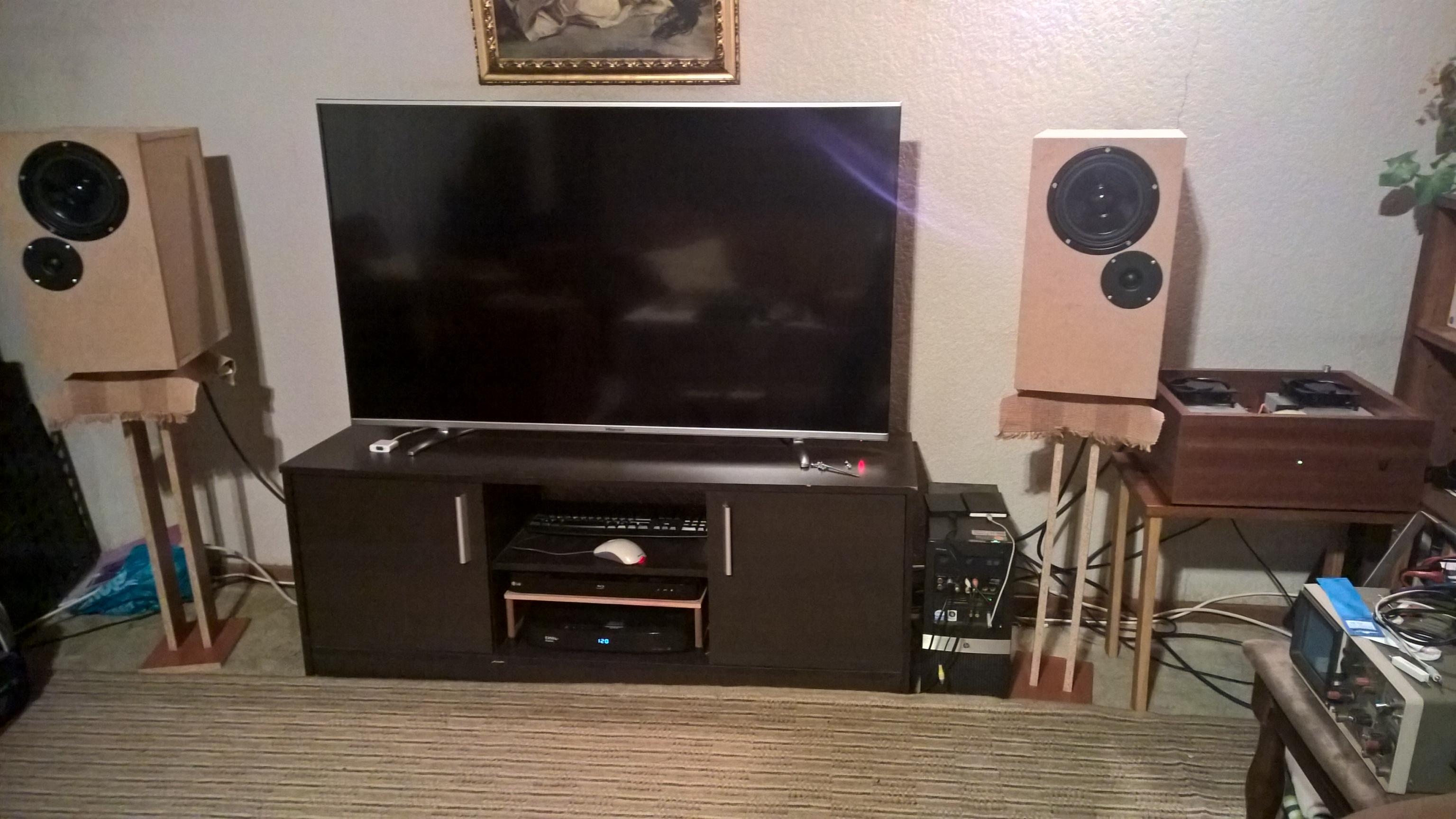
We did a terrific job on impedance, FR and phase, below, IMO. I would like to hear them. 😎
It's a very interesting fact in physics and astronomy that nature favours the golden ratio Phi = 1.618 as a way to get things to not interfere with each other. Thus you find that the Earth and Venus have a stable 13:8 ratio of orbital period. All you can say is that everything else is worse. 13 and 8 are Fibonacci Numbers which have the interesting property of the ratio of successive values increasingly approaching Phi.
0 1 1 2 3 5 8 13 21 34 55 89 144 233 377 610 987 1597 2584 4181 6765 ....
Thus with a simple box, we might just use golden ratio to keep the modes apart. Even use three successive numbers as overall dimensions.
Sloped baffles and pyramidal shapes might have something going for them. Ed Fried was fond of them along with transmission line loading. And we have done this sort of thing in the past here too, for time-alignment reasons. The first two images.
I liked this 6.5" plus 1" construction by Marc in South Africa.
http://www.diyaudio.com/forums/multi-way/305201-visaton-2-way-tower-monitor-audio-bronze-5-a.html

We did a terrific job on impedance, FR and phase, below, IMO. I would like to hear them. 😎
Attachments
Steve, these response curves are much better than those (from even the later editions) of the WATT/PUPPY.
More on this later, but these are nice examples of how to improve on supposed benchmark 'high end' designs with some clever DIY ;-).
Aside: That 'full Aluminium' Samsung F8000 is my favorite LED TV. It's 'only' full HD and from 2013, but remains one the best screens ever from Samsung, along with the 2003 full HD IPS panel
as used in the first Apple Cinema displays and a couple HP monitors (of the latter I still have 4 in use today).
More on this later, but these are nice examples of how to improve on supposed benchmark 'high end' designs with some clever DIY ;-).
Aside: That 'full Aluminium' Samsung F8000 is my favorite LED TV. It's 'only' full HD and from 2013, but remains one the best screens ever from Samsung, along with the 2003 full HD IPS panel
as used in the first Apple Cinema displays and a couple HP monitors (of the latter I still have 4 in use today).
Last edited:
Fibonacci Fascination...
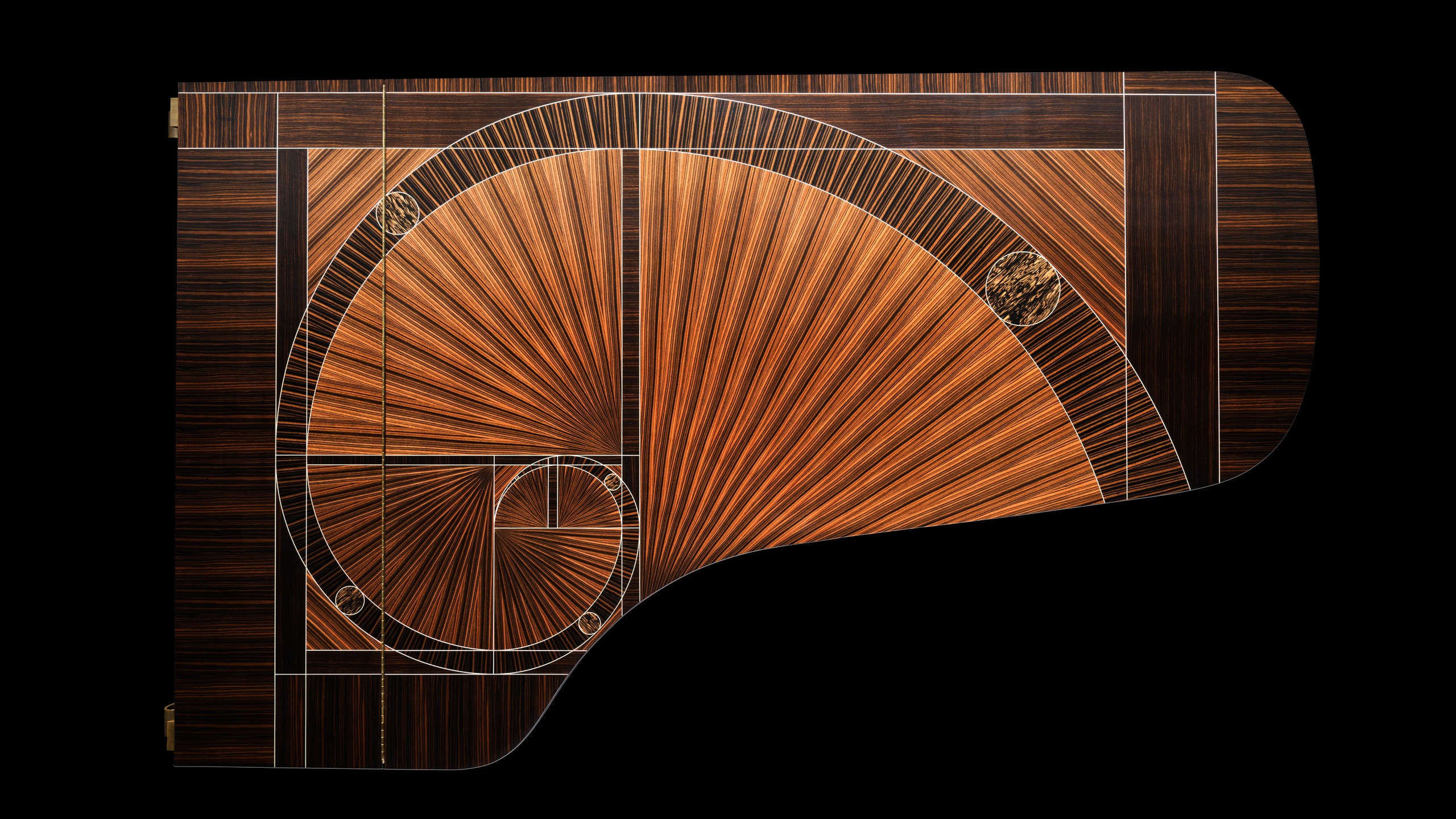

Attachments
-
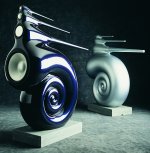 nautilus.jpg430.7 KB · Views: 158
nautilus.jpg430.7 KB · Views: 158 -
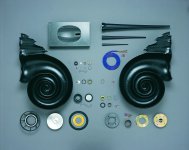 Nautilus_components.jpg780.5 KB · Views: 175
Nautilus_components.jpg780.5 KB · Views: 175 -
 CqEriagVMAIf83G.jpg317.5 KB · Views: 172
CqEriagVMAIf83G.jpg317.5 KB · Views: 172 -
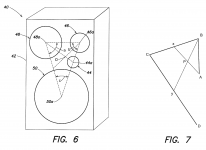 US08422721-20130416-D00006.png82.2 KB · Views: 160
US08422721-20130416-D00006.png82.2 KB · Views: 160 -
 US08422721-20130416-D00011.png122 KB · Views: 161
US08422721-20130416-D00011.png122 KB · Views: 161 -
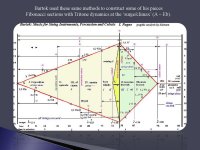 SuperTropical-Paradise_000016.jpg170.7 KB · Views: 144
SuperTropical-Paradise_000016.jpg170.7 KB · Views: 144 -
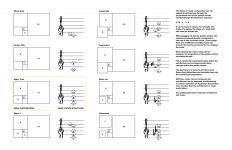 music-golden-section.jpg625.2 KB · Views: 141
music-golden-section.jpg625.2 KB · Views: 141 -
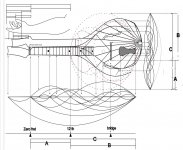 Golden Section 2.jpg138.5 KB · Views: 141
Golden Section 2.jpg138.5 KB · Views: 141 -
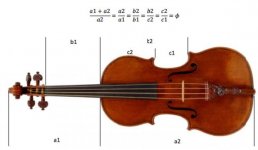 Stradavarius.JPG19.6 KB · Views: 143
Stradavarius.JPG19.6 KB · Views: 143 -
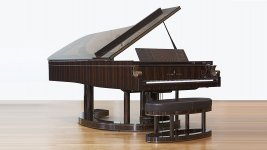 fibonacci_full_view_FMA.jpg.jpg264.9 KB · Views: 149
fibonacci_full_view_FMA.jpg.jpg264.9 KB · Views: 149
These days I'm listening to one of Troels' "3 Way Classics" with the time aligned baffle. It's just a great sounding loudspeaker.
To conclude this derailing of the thread, a few final images
(drawings courtesy of Patrick Bateman):
(drawings courtesy of Patrick Bateman):
Attachments
These days I'm listening to one of Troels' "3 Way Classics" with the time aligned baffle. It's just a great sounding loudspeaker.
Troels has obviously been inspired by Wilson's enclosure designs. He also refers to the SEAS CA17RCY woofer that was used in the WATT (Tiny Tot) Series I-V and on his website you will find several projects with similar vintage drivers from SEAS and Vifa (C17WH).
The C17 appears to be one of his all time favorite woofers and -from my own experience- that makes perfect sense.
It is my guess your 3 Way Classics will beat the Wilson WATT/PUPPY's on coherence between drivers and 'in room' response. No tubby mid-bass, or hot
high frequencies 🙂
Last edited:
@armatureoutput: which version of the Classic 3-way did you choose, the SEAS or the ScanSpeak?
Would be nice to see some images, if that's not too much to ask.
Would be nice to see some images, if that's not too much to ask.
@armatureoutput: which version of the Classic 3-way did you choose, the SEAS or the ScanSpeak?
Would be nice to see some images, if that's not too much to ask.
They're the Audio Technology ones, and they literally look like they do on Troels' site.
They're the Audio Technology ones, and they literally look like they do on Troels' site.
I like to hear from other Troels Classics builders, and I like what I read about the Audio Technology versions. Did you send any photos to Troels to publish on his site?
My SEAS 3-Way Classics are here.
Alex
Steve, these response curves are much better than those (from even the later editions) of the WATT/PUPPY.
More on this later, but these are nice examples of how to improve on supposed benchmark 'high end' designs with some clever DIY ;-).
Aside: That 'full Aluminium' Samsung F8000 is my favorite LED TV. It's 'only' full HD and from 2013, but remains one the best screens ever from Samsung, along with the 2003 full HD IPS panel
as used in the first Apple Cinema displays and a couple HP monitors (of the latter I still have 4 in use today).
Yes, the Wilsons' greatest strengths appear not to be in their measurements! They tend to be quite peaky in the high treble, as well as having a punishingly low impedance at lower frequencies. The Watt/Puppy 8 has an impedance of impedance of 2 ohms at just below 100Hz, but at least it has tamed the 20K peak of the 7 and earlier versions.
Alex
It would be quite interesting to see someone's measurements of a Classic 3 Way in free space. Agreed, this doesn't say much about 'real life' performance (in room), but a means to verify 'net' sensitivity. A driver such as the CY22 shows 89dB up to 200Hz in the specsheet, which would roughly dictate system sensitivity without room gain. There is no doubt about Troels' talent, knowledge and craftmanship, but his claims/measurements sometimes seem somewhat dependent on arbitrary circumstances.
Nevertheless, I support his views on measurements. They tell only a part of the story and do not inform us about the impact of materials on the actual perceived 'sound'. The sound signature of a paper cone is usually (completely) different from prolypopylene, ceramic, kevlar, etc.
This aspect is often neglected by many so called high end manufacturers. Some may disagree, but I think its a decisive element in loudspeaker design. The exception would be a dedicated monitor loudspeaker system.
Nevertheless, I support his views on measurements. They tell only a part of the story and do not inform us about the impact of materials on the actual perceived 'sound'. The sound signature of a paper cone is usually (completely) different from prolypopylene, ceramic, kevlar, etc.
This aspect is often neglected by many so called high end manufacturers. Some may disagree, but I think its a decisive element in loudspeaker design. The exception would be a dedicated monitor loudspeaker system.
Last edited:
This comment from Arthur Salvatore is quite enlightening:
"I was a Wilson Audio dealer in the late 1980’s and personally owned a pair of Watt IIs, that I later extensively modified. I am also familiar with many of their subsequent models. The basic WATT design is David Wilson's greatest audio achievement, because it demonstrated, for the first time, the potential of dynamic loudspeaker designs. When it first came out, it may have been one of the finest speakers available, at any price. Further...
I believe the Wilson WATT to be one of the most important and influential audio components of all time. Despite its obvious faults, the design noticeably proved the critical importance of reducing cabinet resonances to the bare minimum, no matter what the effort and cost. This unique achievement has since permanently changed the course of loudspeaker design, to the amazing degree that almost every serious dynamic speaker made today has been influenced by the WATT. It's difficult to imagine a greater audio legacy than that. In short, almost every audiophile, who uses and enjoys dynamic speakers, owes David Wilson some gratitude, even if they are not fans of Wilson's own models. In fact, somewhat sadly...
It must also be said that the WATT (and every other Wilson Audio speaker) has almost always been overpriced, to even absurd levels in recent years. It is also true that all of Wilson's speakers (except the earlier WATTS) have been grossly overrated by a groveling (see TAS #125) and incompetent audio press. However, the WATTS can still be an excellent choice if purchased used and then modified.
Only their cabinets will be utilized, so it’s best to find the cheapest model available. Updated drivers, crossovers etc. can then be installed for a reasonable (not by Wilson!) cost. The end result will be a superb speaker, definitely competitive to Wilson's latest models, purchased at a fraction of their cost, and which even low-powered (SET/OTL) amplifiers can drive (a major advantage)."
So Arthur Salvatore (a former Wilson Audio dealer) thinks the WATT is a great speaker ... except for minor items like the drivers, crossover, and wiring. Good to know.
Last edited:
So Arthur Salvatore (a former Wilson Audio dealer) thinks the WATT is a great speaker ... except for minor items like the drivers, crossover, and wiring. Good to know.
That's not what he said.
Quite contrary, he said that Watt could be a great speaker if modified.
What's not true about that ?
I like to hear from other Troels Classics builders, and I like what I read about the Audio Technology versions. Did you send any photos to Troels to publish on his site?
My SEAS 3-Way Classics are here.
Alex
These look like works of a pro !
The black leather makes a nice contrast with the cherry veneer (is it American cherry ?).
So Arthur Salvatore (a former Wilson Audio dealer) thinks the WATT is a great speaker ... except for minor items like the drivers, crossover, and wiring. Good to know.
Dear mr. Olson, not only do I respect your work, but I enjoy your sense of humor as well 🙂
Last edited:
That's not what he said. Quite contrary, he said that Watt could be a
great speaker if modified. What's not true about that ?
Replacing everything but the cabinets can't really be called a modification, can it?
The word "gutting" comes to mind.
Last edited:
- Home
- Loudspeakers
- Multi-Way
- Classic monitor designs?

